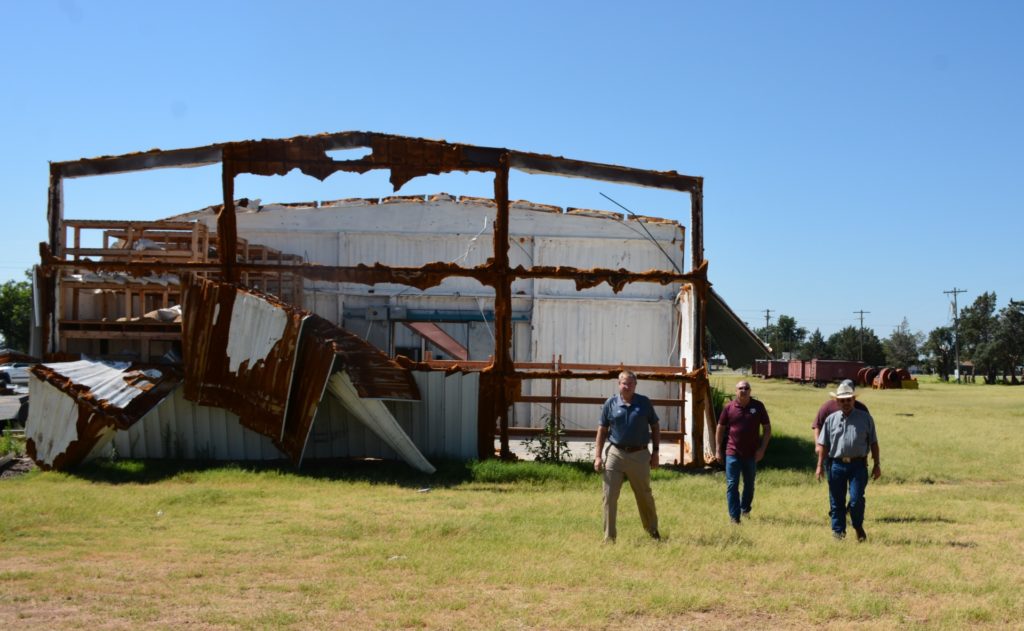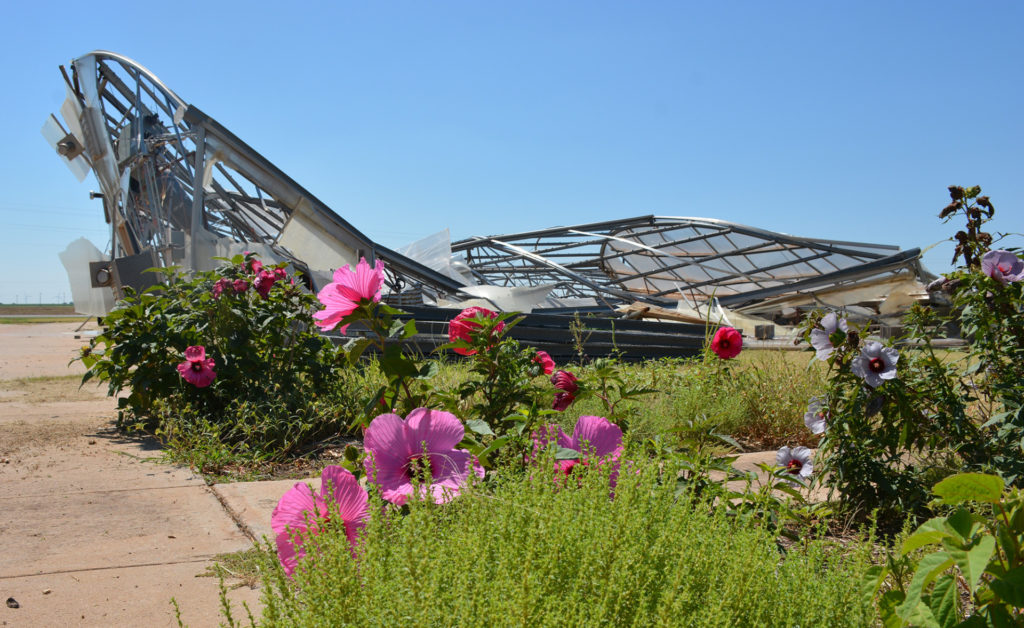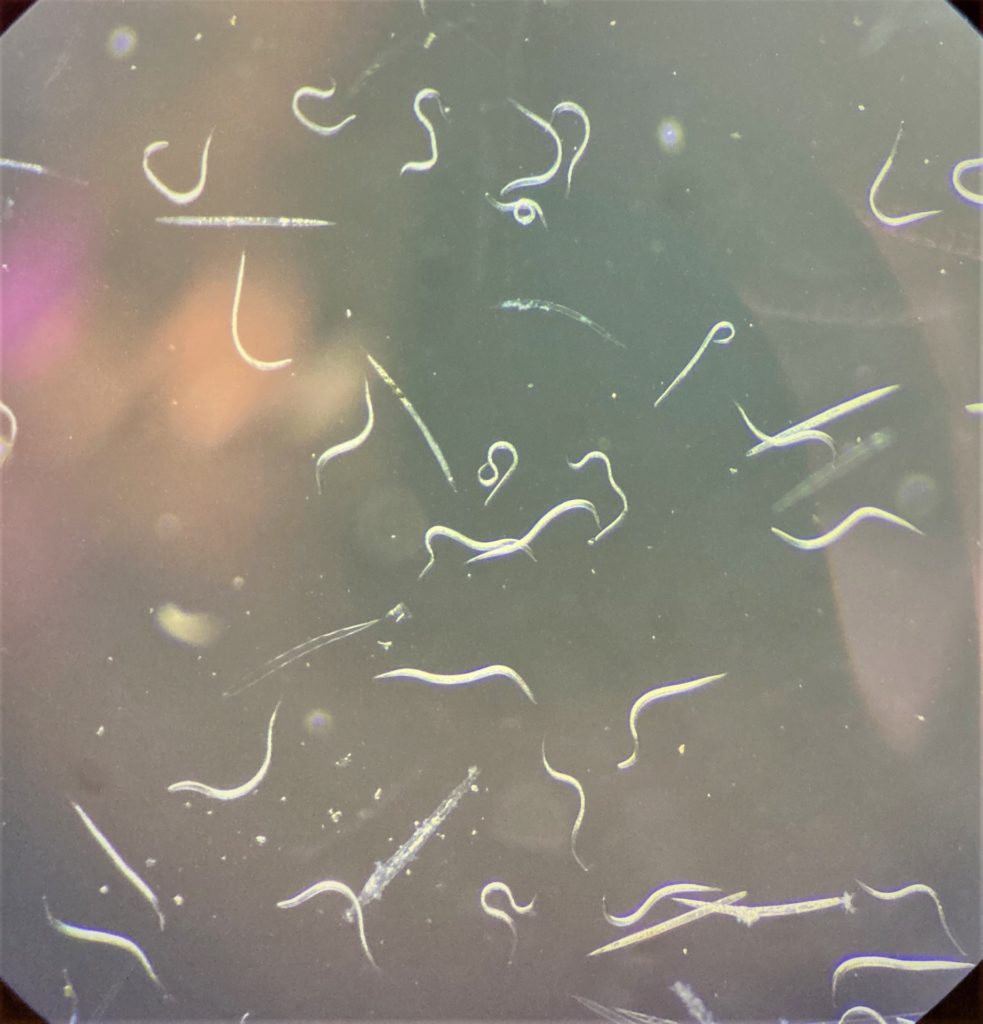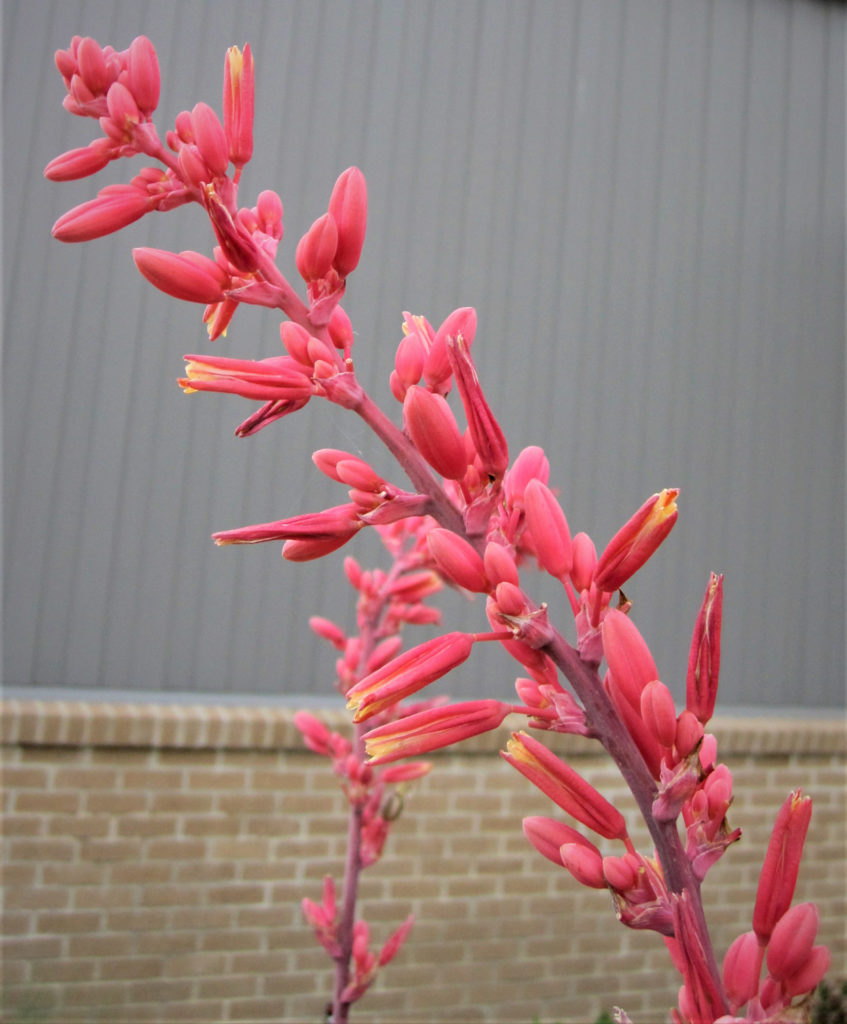Peanut shelling and wheat cleaning moving forward despite tornado damage
There will be no peanut or wheat shortage despite building damage sustained from an EF-3 tornado that hit Texas A&M AgriLife Foundation Seed facilities in May.

There will be no peanut or wheat shortage despite building damage sustained from an EF-3 tornado that hit Texas A&M AgriLife Foundation Seed facilities in May.

Advancing the newest peanut varieties may take an extra year and this year’s peanut crop may not run through the new peanut sheller. But the Texas A&M AgriLife Research and Extension Center and Texas A&M AgriLife Foundation Seed at Vernon continue to serve their clients after a May 4 tornado.

Beneficial nematodes protect plants, and a Texas A&M AgriLife Research project aims to provide a better understanding of these biological bodyguards.
AgriLife Research and Texas A&M Department of Entomology scientist Anjel Helms, Ph.D., is investigating the relationship between plants, tiny worms and plant protection such as killing harmful insect pests in the soil. The goal of the study is to advance scientific knowledge about how plants react to EPNs and activate defense mechanisms against insect herbivores.

Red yucca, a versatile and tough native Texas succulent, was named the newest Texas Superstar plant.
Red yucca, also known as pink yucca, red-flowered yucca, soft-tip yucca or samadoque, is a favorite plant among gardeners in the southwestern U.S. The native plant resembles a cross between other common spine-pointed yuccas and aloe.

Following a May 4 tornado, the Texas A&M AgriLife Research and Extension Center at Vernon and Texas A&M AgriLife Foundation Seed are finding comfort in community support from Vernon to Wichita Falls and from the entire Texas A&M AgriLife statewide network.
The Texas A&M AgriLife properties in the community of Lockett, just south of Vernon, took a direct hit from the tornado, severely damaging many buildings and impacting ongoing research. The facilities are home to the Texas A&M AgriLife Research and Texas A&M AgriLife Extension Service programs for the Rolling Plains region.

The Texas A&M AgriLife Research peanut breeding program has announced the release of two new varieties, Tamrun OL18L and Tamrun OL19, for the West Texas and South Texas production regions.
Both varieties are high-yielding, high-oleic, early maturing, runner-type peanuts, said Mark Burow, Ph.D., AgriLife Research peanut geneticist with a joint appointment at Texas Tech University in Lubbock.
The goal was to develop a peanut that allows for earlier harvest than is possible with current cultivars to reduce the potential for off-flavors associated with immaturity at harvest. Additional goals were improving yield, grade and other agronomic characteristics when compared to Tamrun OL12 and Tamnut OL06.

The Texas A&M AgriLife wheat breeding team once again leads in the development of the varieties producers select to plant across Texas, according to the most recent U.S. Department of Agriculture National Agricultural Statistics Service, USDA-NASS, survey.
TAM 114 remains at the top of the hard red winter wheat varieties, closely followed by TAM 204, according to the Texas Wheat Varieties report released recently.

A drone shot of the irrigated uniform variety wheat trial near Bushland gives a perspective on the differences in hard red winter wheat varieties, including those bred by Texas A&M AgriLife. (Texas A&M AgriLife drone photo by Shannon Baker)
Forage producers are dealing with the ripple effects of dry conditions, sporadic cold temperatures and below-average cool-season production as hay supplies tighten for cattle operations, according to Texas A&M AgriLife Extension Service reports.

As dry conditions continue to grip much of Texas’ Cotton Belt, there are factors producers can control that will improve the chances of establishing a good cotton stands, according to Texas A&M AgriLife Extension Service experts.
On a recent episode of the AgriLife Online Crop Production Podcast, Jourdan Bell, Ph.D., AgriLife Extension agronomist, Amarillo, and Emi Kimura, Ph.D., AgriLife Extension agronomist, Vernon, joined other AgriLife Extension experts to discuss cotton production. Both noted that drought conditions will make crop establishment a challenge.
The latest turfgrass developed by Texas A&M AgriLife Research will be the most drought-resistant St. Augustine variety on the market, researchers said.

“It creates a healthy lawn with less frequent irrigation, saving increasingly important water resources,” said Ambika Chandra, Ph.D., AgriLife Research professor of turfgrass breeding and genetics, Dallas, in the Department of Soil and Crop Sciences.